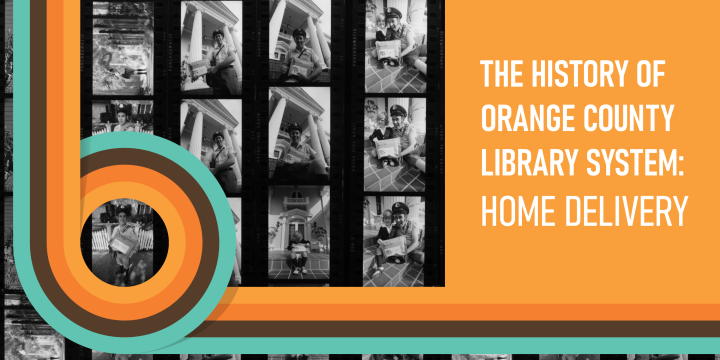The Orange County Library System books-by-mail program was initiated in December 1973. At the time, the library’s presence in Orange County consisted of the Orlando Public Library, nine branches and an aging bookmobile. The county population was about 350,000 and development was stretching in all directions. Library Director Glenn Miller wanted to phase out the bookmobile while still providing accessible library service to residents across the county. Books-by-mail was the answer. Mail delivery service was fairly common among public libraries at the time, but these programs were typically available only to customers who were homebound. OCLS books-by-mail made no such distinction. All cardholders could call to request titles, and the library would mail books to patrons’ homes at no cost. The library would pay postage, treating the cost of books-by-mail operations as equivalent to the overhead costs for a physical branch.
In 1975, 9,000 books were mailed to patrons. Growth was slow but steady into the 1980s, as Orlando Public Library was expanded and the network of branches began to reach more distant communities. In the late 1980s, the books-by-mail program was given the name MAYL, which stood for Mailbox Access to Your Library. By 1990, MAYL circulation was averaging 18,000 books per month. By 1992 audiovisual items became eligible for home delivery and accounted for 10% of all requests.
The library faced a dilemma in 1994 when the United States Postal Service announced a 70% increase in library book postage rates. In June of that year, the Orlando Sentinel ran a story about the impending postal increase, reporting on the library’s search for home delivery alternatives. After reading the article, Rick Bennett and Dennis Clay approached OCLS with a proposal. Bennett and Clay, friends with backgrounds as managers in delivery organizations, were confident they could provide quick delivery, at a competitive cost, with less intensive package preparation for library staff. In early 1995, the library began a trial run with Bennett and Clay’s new company, Priority Express Parcel (PEP). It was soon apparent that PEP provided a superior alternative to the post office in terms of both cost and service. By 2000, PEP was delivering 90% of requests for home delivery of materials. Along the way, the library changed the first word in MAYL so that the acronym stood for Materials Access to Your Library, as mailboxes were decreasingly involved in deliveries.
The OCLS website was introduced in 1998, allowing patrons to request items for home delivery online. That year, just over 2,500 requests were made by patrons via the web. In just two years, the library was receiving more than 15,000 online requests each month. The 2000s were a decade of extraordinary growth for MAYL. Glenn Miller’s innovative approach to providing library service in the 1970s proved to be perfectly suited for the emergence of the internet. By 2008, the library was receiving more than 65,000 monthly online home delivery requests, and MAYL deliveries represented nearly 10% of all checked-out items. As MAYL grew, so did the library’s relationship with PEP. The company took over inter-branch delivery in the late 1990s, and its service area expanded to ultimately handle 98% of all MAYL deliveries. By 2010, PEP was managing packaging duties for requested items, further streamlining the MAYL process.
In the years that followed, the increasing popularity of downloadable options tempered physical circulation to some degree. Still, MAYL continued to rank at or near the top in the number of items checked out among physical OCLS locations. The service again proved to be perfectly suited for another societal shift during the COVID-19 pandemic in 2020. That spring and summer, home deliveries increased 50% over the previous year. In some cases, delivery included needed supplies for customers taking part in online classes. During those challenging times, MAYL connected residents to the library like never before.
It’s noteworthy that as OCLS celebrates 100 years, its innovative home delivery service has existed for half of that century. Whether known as books-by-mail, MAYL or simply home delivery, it has grown in reach and efficiency through the decades while remaining a cost-effective way to provide all residents access to library materials. Perhaps most significantly, through surveys and comments, customers continue to overwhelmingly rank home delivery as one of the best things about OCLS.

